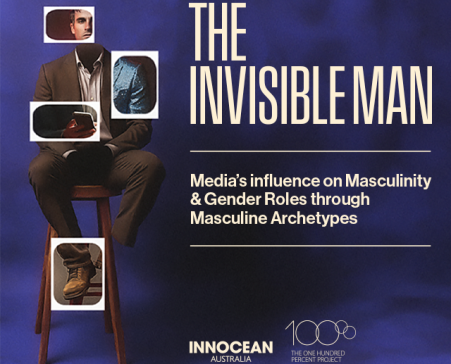Diversity of Thought Blog
Level the Playing Field: Can Adaptive Leadership help turn gender leadership rhetoric into action?
By Chloe Kypuros, Fiona Page and Frances Feenstra
Despite some meaningful gains over the past decades, in 2013, women at the highest levels of organisations continue to be rare in comparison to male leaders. In addition, access to the same rewards, resources and opportunities regardless of sex remain a distant reality considering women continue to earn less than men, are less likely to advance their careers compared to men and are less likely to reach their full potential in leadership as opposed to men[1].
Clearly catching up with men particularly at the top is a significant problem that is taking much longer than expected to overcome[2]. Despite large numbers of women entering the Australian workforce, women only represent 12.3% of board directors, 9.7% senior executives and most disappointingly 3.5% of CEO’s within the top 200 organisations ranked by the Australian Stock Exchange (WGEA, 2013).
To deal with this issue, solutions such as gender targets, flexible working practices and maternity leave programs have been implemented by most Australian organisations with the aim of recruiting and retaining a larger portion of the female talent pool (WGEA, 2013). While such initiatives have had some impact, the slow progress of increasing the number of women at the top of organisations indicates that they are not nearly enough. Despite the fact that a majority of leaders recognise the impact of gender diversity on business performance, this belief does not translate into actions[3]. A new approach is needed. Adaptive Leadership may be such an approach, it may help us close the gap between gender leadership rhetoric and action.
What is Adaptive Leadership and why is it important for today’s leaders?
Adaptive Leadership is a theory that looks at how organisations can adapt and thrive in challenging environments through growth and capitalisation on change [4]. It embraces a polyarchic approach to leading and managing, with power dispersed to all levels of the organisation so that all individuals are engaged in the change process[5] [6].
Unlike other well-known theories of leadership such as Transformational Leadership, Adaptive Leadership theory doesn’t focus on the interaction between leaders and their followers – instead it asserts the benefits of employing the knowledge of the wider organisation, generating a larger vested interest and collective intelligence to diagnose challenges and implement solutions in the face of intensifying global competition, political and economic instability and increasing internal and external pressures[7].
Leaders are encouraged to not ‘hunker down’ and default to known or traditional problem solving strategies[8]. Rather it is recommended that leaders embrace uncertainty and seize the opportunities for changing the implicit organisational rules, structures and cultures that prevent organisations from shifting from one state to another.
Adaptive Leadership theory recognises that organisations do not function as simple systems, but are actually complex and evolutionary ecologies in which ready-made solutions are increasingly rare[9]. Organisations must encourage system wide learning of new habits and attitudes by abandoning and transforming traditional views of leadership into dynamic approaches where challenges they face can be successfully managed [10].
According to Heifetz and colleagues adaptive leadership framework, what distinguishes organisations that have more adaptive capacity from those with less are five key characteristics; elephants in the room are named, responsibility for the organisation’s future is shared, independent judgment is expected, leadership capacity is developed, and reflection and continuous learning are institutionalised. For example, how quickly crises are identified and discussed or how often disappointments are regarded as learning opportunities as opposed to personal failures are two of the hallmarks of adaptive organisations [11].
Randall and Coakley investigated the application of Heifetz and Linsky’s Adaptive Leadership framework to successful implementation of change initiatives in academia[12]. The authors examined case studies of two different universities and the challenges both faced in attracting more students. They demonstrated that the university which successfully implemented change and achieved an increased number of students was the one that embodied the key characteristics of the Adaptive Leadership framework. This result suggests that the application of Adaptive Leadership theory to complex problems such as gender leadership diversity needs to be considered.
How does Adaptive Leadership drive gender equality?
Overcoming gender based discrimination in senior organisational positions has proven to be an ongoing issue for Australian organisations. Attempts made by both government bodies and organisations to abolish gender-based disparity within the corporate world have not been as successful as initially hoped and have been unable to solve gender inequity in senior leadership roles.
To date, attempts to close the gender gap in leadership in Australia have largely focused on technical solutions – such as introducing anti-discrimination policies, flexible work arrangements or formal mentoring programs aimed at women[13].
These kinds of solutions work in “situation(s) where both the problem and the potential solution can be clearly defined”[14]. Gender imbalance in leadership is not such a simple problem. It is an issue Australia has grappled with for decades without much success. It is a challenge that requires recognition of the complex, systemic nature of the issue – and we therefore need to look for an approach such as Adaptive Leadership.
The fundamental shift in the business environment means that organisations are now faced with the reality of needing to evolve through uncertainty where there are no simple solutions. Organisations risk extinction if they are unable to deal with the many challenges facing them quickly enough. Developing qualities of adaptive leadership within organisations may well prove critical in solving ongoing challenges such as the gender imbalance in leadership and as a result reaping the business benefits of increased gender diversity at the highest levels in our Australian organisations.
Level the playing field: Turning gender leadership rhetoric into more effective action.
On Novermber 14, The 100% Project is hosting an Adaptive Leadership Symposium that will change the fundamental way organisations operate through change in the systems structure. “Level the playing field: Turning gender leadership rhetoric into more effective action” will be lead by Marty Linsky – one of the foremost thought leaders in Adaptive Leadership, all the way from Harvard Kennedy School. As the co-author of ‘The Art and Practice of Adaptive Leadership’ and ‘Leadership on the Line: Staying Alive Through the Dangers of Leading’, it is a special opportunity to have Linksy here is Australia. If you are interested in finding out more, visit www.the100percentproject.com.au/
[1] Workplace Gender Equality Agency. (2013). About workplace gender equality. Retrieved from http://www.wgea.gov.au/learn/about-workplace-gender- equality
[2] Beck, B. (2011, November 26). Closing the Gap. The Economist. Retrieved from http://www.economist.com/node/21539928/print
[3] McKinsey and Company (2010). Women Matter. Women at the top of corporations: Making it happen.
[4]Heifetz, Grashow & Linsky (2009). The practice of adaptive leadership: Tools and tactics for changing your organisation and the world. USA: Harvard Business Review Press.
[5]Heifetz& Laurie (2003). The leader as teacher: creating the learning organisation. Ivey Business Journal: Improving the practice of management, p. 1-9.
[6] Obolensky (2009). Complex adaptive leadership: embracing paradox and uncertainty. Gower Publication Company.
[7] Heifetz et al (2009). The practice of adaptive leadership: Tools and tactics for changing your organisation and the world. USA: Harvard Business Review Press.
[8] Heifetz, Grashow & Linsky (2009). Leadership in a (permanent) crisis. Harvard Business Review, p1-6.
[9] Lichtenstein, Uhl-Bien, Marion, Seers, & Orton (2006). Complexity leadership theory: an interactive perspective on leading in complex adaptive systems. Emergence: Complexity & Organisations, 8(4), p 2-12.
[10]Heifetz et al (2009). The practice of adaptive leadership: Tools and tactics for changing your organisation and the world. USA: Harvard Business Review Press.
[11]Heifetz et al (2009). The practice of adaptive leadership: Tools and tactics for changing your organisation and the world. USA: Harvard Business Review Press.
[12] Randall & Coakley (2007). Applying adaptive leadership to successful change initiatives in academia. Leadership & Organizational Development Journal, 28(4), p. 325-335.
[13] Broderick (2013). The face of gender based discrimination in Australian workplaces.Retrievedfromhttp://www.humanrights.gov.au/news/speeches/ face-gender-based-discrimination-australian-workplaces.
[14] Thygeson, Morrissey, L & Ulstad (2010; p.1010). Adaptive leadership and the practice of medicine: a complexity-based approach to reframing the doctor- patient relationship. Journal of Evaluation in Clinical Practice, 16, p 1009- 1015.


